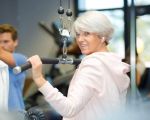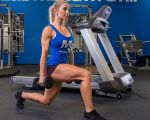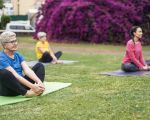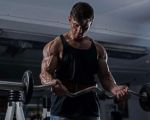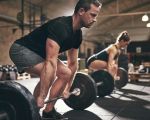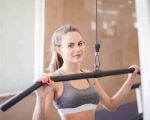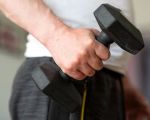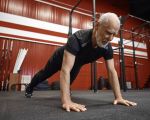
- Understanding Gym Machines Basics
- Types of Gym Machines and Their Functions
- How to Use Gym Machines Safely and Effectively
- Real-Life Examples and Personal Insights
- Why Choosing the Right Fitness Equipment Matters
1. Understanding Gym Machines Basics
For anyone stepping into a gym for the first time, the variety of gym machines can be overwhelming. Gym machines are designed to target specific muscle groups through controlled movements, offering a safer and often more guided workout experience compared to free weights. These machines help beginners build strength, improve posture, and enhance coordination by limiting the risk of incorrect form and injury.
Most gym machines consist of adjustable seats, weight stacks, pulleys, and handles or bars, each engineered to facilitate specific types of exercises such as pushing, pulling, or lifting. Understanding the basics of how these machines work is key to maximizing your workout effectiveness and building confidence as you progress.
1.1 The Importance of Proper Form
One of the main benefits of gym machines explained for beginners is that they promote proper form through guided movements. Unlike free weights, the path of motion is controlled, which reduces the chances of injury. This feature is especially helpful for newcomers who are still learning muscle engagement and movement patterns.
1.2 Adjustable Features and Customization
Most machines come with adjustable settings that accommodate different body sizes and fitness levels. Beginners should take time to adjust the seat height, backrest, and weight load to fit their needs before starting any exercise. Doing so ensures comfort and optimal muscle activation during workouts.
2. Types of Gym Machines and Their Functions
Gym machines are broadly categorized based on the muscle groups they target and the type of exercise performed. Understanding these categories helps beginners choose the right machines aligned with their fitness goals.
2.1 Resistance Machines
Resistance machines use a weight stack or plates to create resistance against your movements. Examples include leg press machines, chest press machines, and lat pulldown machines. These machines are excellent for building muscle strength and size by isolating specific muscles.
2.2 Cable Machines
Cable machines are versatile pieces of equipment that allow a wide range of motion and exercises. They use pulleys and adjustable cables, making them ideal for functional training and targeting muscles through natural movement patterns.
2.3 Cardio Machines
While not strength-focused, cardio machines like treadmills, stationary bikes, and ellipticals are important components of a balanced workout routine. They improve cardiovascular health and endurance, complementing strength training with gym machines.
2.4 Functional Trainers
Functional trainers combine elements of resistance and cable machines. They allow for multi-directional movements and are often used for sport-specific training or rehabilitation, making them suitable for advanced beginners or those with specific performance goals.
3. How to Use Gym Machines Safely and Effectively
Using gym machines correctly is crucial for safety and results. Here are detailed steps to get started:
3.1 Start with a Warm-Up
Before using any gym machines, warming up with light cardio or dynamic stretches prepares your muscles and joints, reducing injury risk.
3.2 Adjust the Machine to Your Body
Take time to personalize settings. Improper adjustments can lead to ineffective workouts or strain injuries. If unsure, ask a fitness professional for guidance or refer to instructional diagrams often displayed on the machine.
3.3 Focus on Controlled Movements
Move slowly and deliberately to maintain tension on muscles and avoid jerky motions. Controlled reps maximize muscle engagement and reduce joint stress.
3.4 Start with Light Weights
For beginners, it’s essential to build a base of proper technique before increasing weight. Gradually increase resistance as your strength and confidence grow.
3.5 Incorporate Balanced Muscle Training
Avoid focusing only on one muscle group. Use a variety of machines that work opposing muscle groups (e.g., chest and back) to maintain muscular balance and prevent injury.
4. Real-Life Examples and Personal Insights
Take Sarah’s story for example, a beginner who was intimidated by gym machines when she first joined the gym. By starting with a trainer-guided introduction to key machines like the leg press and lat pulldown, she gradually built strength and confidence. Within three months, Sarah was able to independently navigate her workouts, increasing weights safely and seeing consistent progress.
This real-life example highlights the importance of personalized guidance and patience when learning gym machines. It’s also a reminder that progress comes step-by-step, and initial hesitations are completely normal.
From my experience coaching beginners, I’ve seen how using gym machines correctly not only speeds up strength gains but also instills a sense of empowerment. When you understand the mechanics behind each machine and listen to your body, working out becomes less about fear and more about growth.
5. Why Choosing the Right Fitness Equipment Matters
Investing in the right fitness equipment is crucial whether you’re working out at home or selecting gym machines in a commercial facility. The right equipment matches your fitness goals, accommodates your body mechanics, and motivates you to stay consistent.
If you are searching for reliable and beginner-friendly fitness equipment or looking to upgrade your workout routine, Fitness offers a carefully curated selection of gym machines and expert advice tailored to your needs. Whether you want strength machines, cardio gear, or multifunctional trainers, Fitness can help you find the perfect match.
Ultimately, understanding gym machines for beginners is more than just knowing how to operate them; it’s about building a sustainable fitness habit with the right tools and knowledge.

